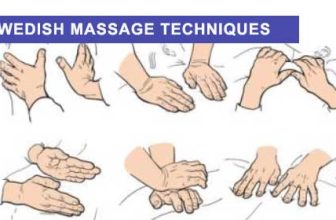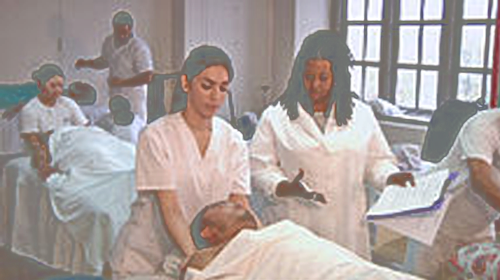Massage Therapy Terms:
Adhesion – aka knot; a fibrous band or structure by which parts are abnormally adhered. Excessive cross-linkages binding connective tissue to muscle fibers, muscles to bone, connective tissue to bone, or muscle fibre to muscle fibre. An adhesion may be found in muscles, tendons, and ligaments.
Assessment — is an educated evaluation of the client’s condition and physical basis for her symptoms in order to determine the course of the treatment.
Avulsion — tendon attachment tear away from the bone.
Boundaries — limits set by the therapist in relation to the client, before, during, after the treatment. They can be concrete, murky, clear, or abstract.
Contractile Structures — those that have the ability to contract. Examples are muscles, tendons and their attachments.
Contracture — a passive shortening of connective tissue supporting structures over and around joints. These structures include muscles, or other soft tissue such as tendons and joint capsules.
Contraindication– any condition which renders a particular application of massage imporper or undesirable, it is a problem or condition where massage would be detrimental. May be local, absolute or relative.
Crepitus – palpable roughness in a joint or tendon that is noted with movement and sometimes accompanied by an audible ‘ crunching’.
Ecchymosis — bruise.
Edema — local or generalized accumulation of fluid in the body tissue or interstitial spaces.
Effect — actual result on the body from a massage manipulation.
Effleurage – to guide, stroke, or touch lightly. A manipulation in which the entire palmar surface of the hand, including the digits are moulded to the contours of the body and applied in a stroking motion towards the heart.
Emotional First Aid — provides emotional support to help a client through an emotion while giving a massage treatment. This does not allow the client to deepen the emotion or gain insight, it is within set boundaries and not a psychotherapeutic facilitation.
Fascia — fibrous connective tissue that separates, surrounds, and connects organized structures. It reinforces areas where tendons pass over joints and maintains the shape of long muscles. Deep fascia surrounds and packs the spaces between deep organs and muscles. Fascia found beneath the skin is called superficial or subcutaneous fascia.
Fibrosis — formation of abnormal collagenous connective tissue and excessive adhesions in muscles, tendons and ligaments . Fibrosis results from tissue damage, acute or chronic inflammation, sustained or frequent mechanical stress to a connective tissue structure, or immobilization.
Flaccid Paralysis — disorder where there is loss of muscle tone, loss or reduction of tendon reflexes and atrophy of muscles.
Golgi Tendon Organs — GTO; proprioceptors located within tendons of skeletal muscle that detect the amount of tension in amuscle tendon. These are responsible for the GTO reflex, causing reflex relaxation of a muscle if the tension in the muscle tendon becomes too great. The GTO reflex prevents the tension from becoming so great that there is tearing and avulsion.
Hyperemia – an excess of blood flow to a part, caused by local or general relaxation of the arterioles. Visual redness of the skin is observed, and heat is usually palpated.
Hypertonicity — abnormally increased tone with the presence of painful, dysfunctional muscles.
Hypotonicity — loss of muscle tone or decrease in tone. Muscles may be refereed to as ‘flaccid’.
Hypoxia — reduced oxygen supply which weakens cells without killing them. May be a result of prolonged ischemia.
Inert Structures — without power to move or act. These structures are non- contractile. Examples are joint capsules, ligaments, bursae, fascia, blood vessels, nerve, cartilage and bone.
Ischemia – local or temporary deficiency of blood supply to a part due to obstruction of circulation.
Lesion — any pathological or traumatic discontinuity of tissue or loss of function of a part. Examples include sprains, strains, muscle tearing, inflammation, nerve lesion, cut etc.
Mechanical Effect – actual result caused by a direct force at the sight of the applied force. Can be direct or indirect. Generally lasts a short duration and involves changes at the level of gross anatomy.
Modality — a method of application or the employment of any therapeutic agent.
Muscle Spindle — a sensory organ, located in muscles that detect the change in length and rate of change in length of muscle fibres. It is responsible for the stretch reflex, causing reflex contractility if the muscle is stretched too quickly.
Muscular Atrophy — wasting away of muscles. Individual muscle fibres decrease in size. Can be ‘disuse atrophy’ or ‘ denervation atrophy’.
Muscular Hypertrophy — increase in diameter of muscle fibres, as a result of forceful, repetitive activity.
Nociceptors — pain receptors.
Palpation — is the placement of the therapist’s hands on the client’s tissue to assess its condition.
Petrissage — movements applied with one or both hands using alternative pressure and release of soft tissue. Pressure is applied by lifting soft tissue up from underlying structures or by compressing down toward underlying structures or by rolling. It can be superficial or deep.
Kneading — a movement applied with the palms, fingertips, thumbs, knuckle or forearm in a circular motion. Pressure is applied in the upward stroke and is exerted down toward underlying structures.
Wringing – applied by lifting a muscle group away from underlying structures.
Picking Up — applied by lifting muscle tissue with palms, fingers or heel of one or both hands in a circular motion with pressure in the direction of venous flow.
Skin Rolling — skin is grasped between thumb and fingers and rolled.
Muscle Compressions — pressure is exerted toward a muscle or muscle group and the underlying structures.
Muscle Squeezing — slow, deep squeeze of a muscle.
C-Scooping– palmar surface of the hand, thumb and fingers are used to alternately pickup and release tissues in a circular and scooping manner.
Pilomotor Response — contraction of the smooth muscles, called erector pili muscles, that are attached to hair follicles.
Proprioceptors — sensory nerve endings that give info regarding movements and positions of the body.
Reflex Effect – results initiated by the body’s own processes as a response to mechanical force. It is an involuntary response to a stimulus mediated by the nervous system.
Reflex Muscle Guarding — a muscular spasm in response to a local tissue injury. This muscle spasm prevents further injury by reducing movement of the injured structures.
Scar Tissue – mature collagen- based tissue that develops as a result of the inflammatory process. Causes may include paralysis, prolonged immobilization, inflammatory response due to wounds, burns, trauma or inflammatory arthritides.
Spasm — a sudden, involuntary, sustained contraction of a muscle.
Spasticity – increased muscle tone associated with increased tendon reflexes and pathological reflexes.
Spastic Paralysis — movements may be uncontrolled or overexaggerated.
Succussive Action — sponge-like action created in the articular cartilage of joints to supply the cartilage with nutrients.
Tendon Reflex– reflex act in which a muscle contracts when its tendon is percussed or whacked.
Tone — the normal degree of tension in a muscle.
Use — composite of the reasons why a particular effect would want to be generated through the use of massage. It denotes the applicable value of the treatement.
Vasoconstriction– narrowing or decrease in diameter of the vessel lumen.
Vasodilation– widening or increase in diameter of the vessel lumen.
Vasomotor Reflex — AKA circulatory reflex. Reflex effects of massage on the circulation, causing local hyperaemia in the area being treated as a result of vasonstriction followed by vasodilation.
Vibrations — oscillations to the tissue, static or running manipulation performed with palmar surface or fingertips where the hand is rested on the area and vibrated while maintaining contact.


